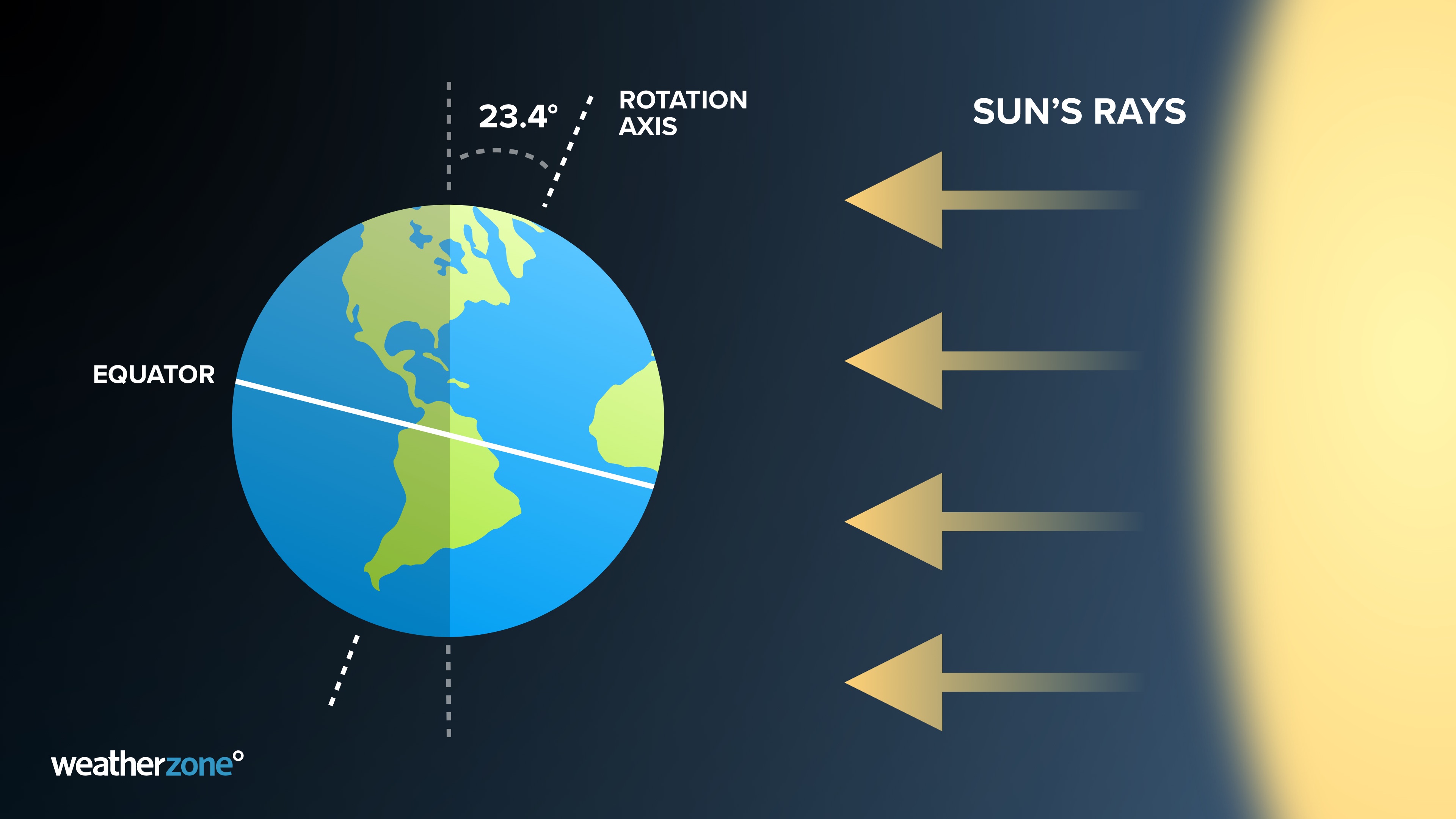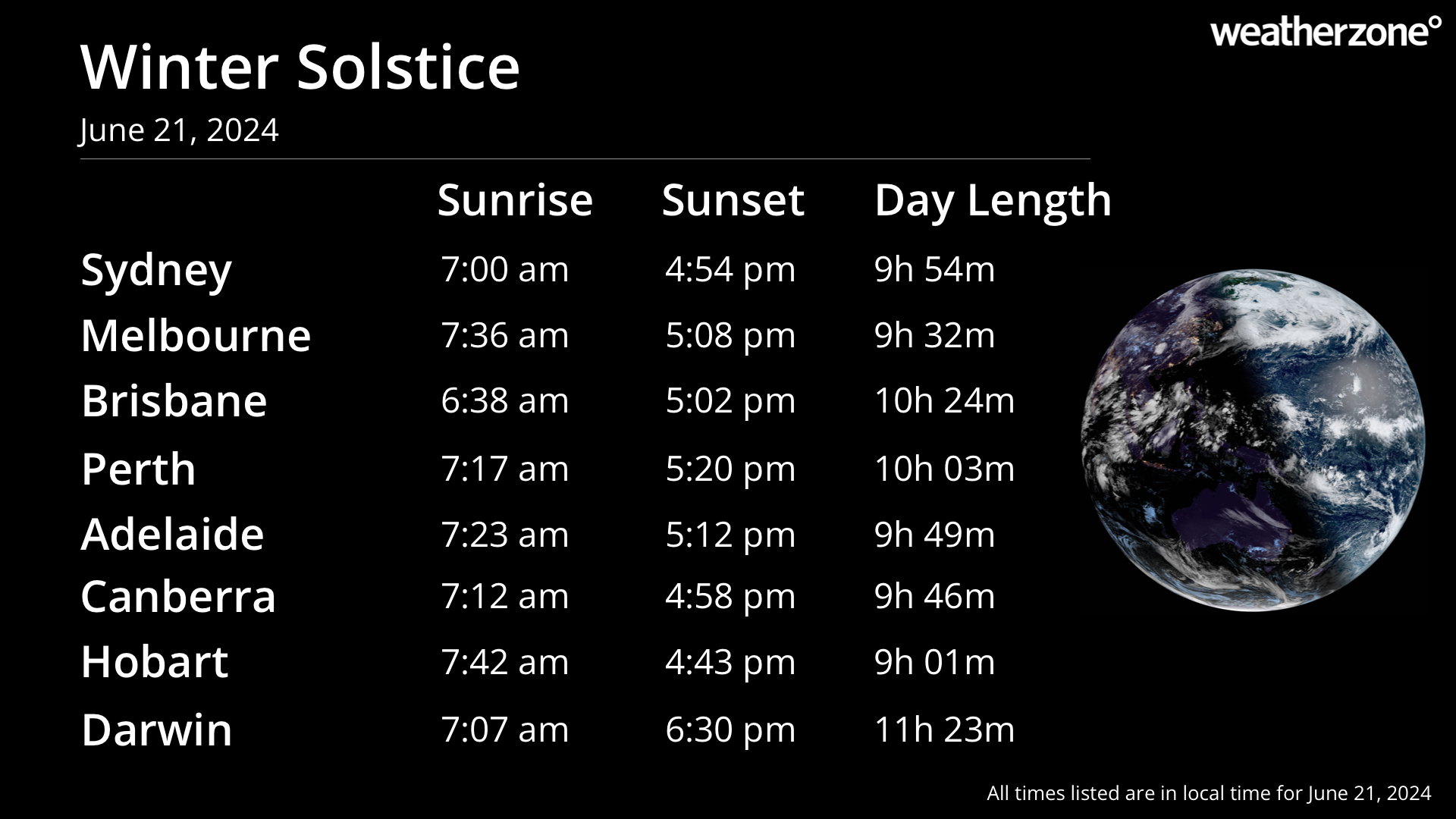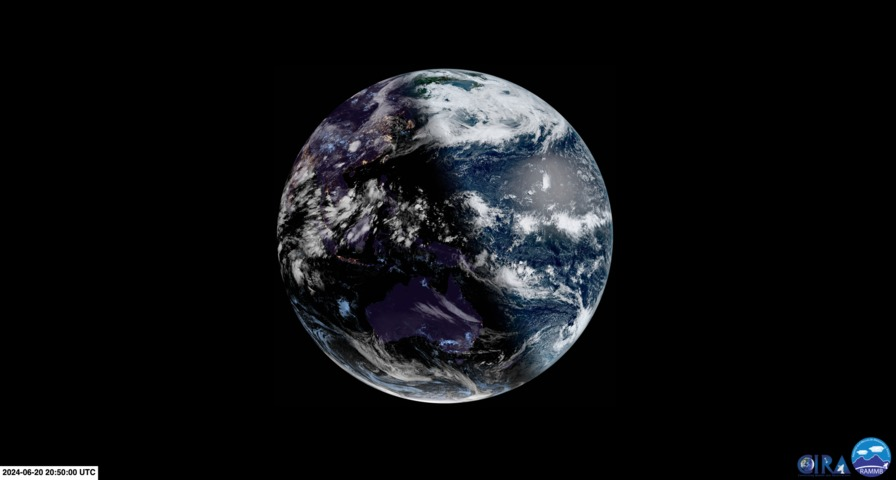Today marks the date of the winter solstice in the Southern Hemisphere, making it Australia’s shortest day of the year based on time between sunrise and sunset.
The winter solstice is an annual occurrence that falls in late-June each year. It marks the moment Earth’s Southern Hemisphere reached its furthest tilt away from the Sun, which causes:
- The Southern Hemisphere’s shortest day of the year (longest day of the year for the Northern Hemisphere) based on daylight hours
- The Sun to sit at its lowest point in the sky when viewed form the Southern Hemisphere (highest point for Northern Hemisphere viewers)
- Recurrent discussions about the ‘official’ start of winter in Australia – while Australia’s meteorological winter starts on June 1, the solstice marks the beginning of the astronomical winter.

Image: Orientation of Earth relative to the Sun on the date of the winter solstice.
This year’s winter solstice occurred at 6:51am AEST on June 21, which was 8:51pm on June 20 based on Coordinated Universal Time (UTC). While the winter solstice is a moment in time, the day it falls on is also commonly referred to as the solstice.
Daylength on Friday, June 21, will range from about 9 hours and 1 minute in Hobart to 11 hours and 23 minutes in Darwin. Sydney will have just under 10 hours between sunrise and sunset and Melbourne’s day will last just over nine and a half hours.

Image: Approximate sunrise, sunset and day length times for Australia’s capital cities on the date of the 2024 winter solstice.
Following today’s winter solstice, days will start getting longer and nights will get shorter in Australia. This trend will continue for the next six months until the summer solstice in late December.






